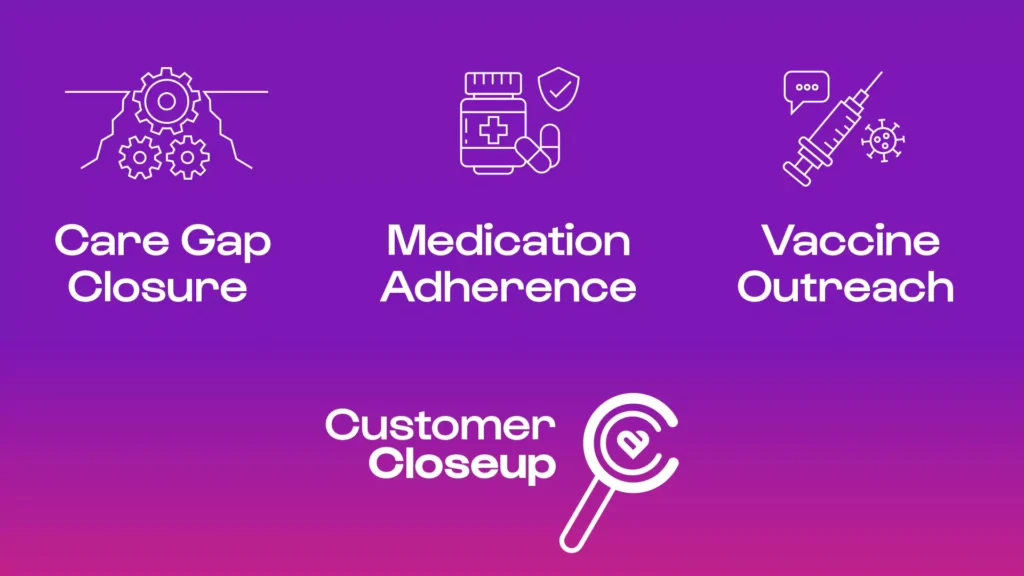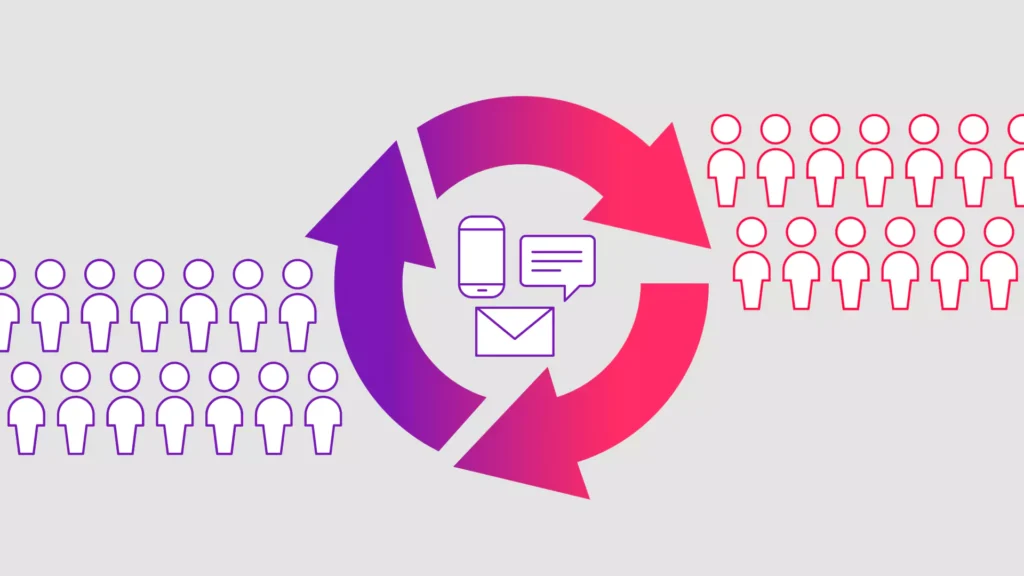Nearly one in five Americans will experience a mental illness in a given year – equivalent to a total of roughly 50 million people.
This number has skyrocketed over the past two years, now reaching over 42% of American adults experiencing symptoms of anxiety or depressive disorder. While the COVID pandemic certainly exacerbated these issues, worldwide mental health conditions have been on a steady incline for years. And despite progress on the pandemic front, a mental health crisis continues on.
There has never been a more crucial time to address mental health challenges and implement innovative solutions that may benefit the entire mental health ecosystem. For starters, let’s look at patient-provider communication, which has proven to be critical in improving physical health outcomes, especially in light of COVID-19. But, what role does it play in addressing mental health?
Mental illness knows no boundaries
Mental health is important at every stage of life, from childhood to adolescence through adulthood. Depending on many factors, mental health conditions can, and likely will, change over time. Nobody is immune to poor mental health, and in fact, it’s estimated that approximately 50% of the US population will experience mental illness at some point in their lifetime.
In 2021, numerous pediatric health organizations declared a national emergency for children’s mental health. Children’s hospitals continue to see more kids show up in their emergency rooms for mental health reasons, seeking care for everything from severe anxiety, to eating disorders, and suicide attempts. According to a recent Kaiser Family Foundation poll, nearly 1 in 3 parents say their children’s mental health is worse now than it was before the pandemic.
Healthcare workers are also struggling with mental health challenges, facing high rates of stress and burnout. The continued escalation of mental health needs across the nation is one factor that has strained service providers. Another key factor? The outdated patient communications process.
A 2021 WELL Health study – exploring the impact of patient communications on clinical support staff – found that 88% of respondents reported moderate to extreme burnout. More than half reported feeling so overwhelmed to the point of wanting to quit. Many support staff believe the patient communication problem – and their resulting burnout – is even hurting patient care quality.
These feelings of stress and burnout can lead to even more serious issues, however. In a January 2021 study in the Journal of General Internal Medicine, researchers found a majority of healthcare worker participants reported experiencing clinically significant psychiatric symptoms, including post-traumatic stress disorder (38%), depression (74%), anxiety (75%), and recent thoughts of suicide or self-harm (15%).
Ultimately, we are all human. No matter one’s age or career, mental health issues can arise. And while the entire mental health ecosystem must evolve, providers in particular should see this as an opportunity to adopt a more innovative, holistic approach to patient-provider communication – supporting both the patient and staff needs to improve mental health conditions.
Technology opens up doors for mental health support
With over 8.6 billion mobile phone subscriptions and 4.6 billion internet users worldwide, technology can play a substantial role in supporting community mental health where accessibility concerns, service gaps, and high cost of services are often reported.
With a number of different apps, texting services, and online mental health resources available to the general public, people now have a variety of options. It’s clear this new era of mental health technology and services presents tremendous opportunity. But even more so, it helps identify what people may truly be searching for: a sense of connectedness.
Texting can support a greater sense of connectedness
Conversational messaging is a unique way to communicate; it’s immediate, but we can answer at our own convenience. It’s familiar, but doesn’t invade our personal space like a phone call potentially can. This makes it an ideal solution for healthcare providers and patients.
For many American adults, texting is the preferred form of communication. Not only is it an effective method for patient communication, but it can also help provide a sense of connectedness that humans inherently crave as social beings – patients and providers alike. According to Stanford Medicine research, a greater sense of connectedness can lend to greater mental well-being, including lower levels of anxiety and depression.
In a 2021 study, researchers evaluated the experiences of patients who had recently been discharged from acute care mental health units and were using a supportive texting service, Text4Support. Participants received daily supportive text messages for a 6-month period. Not only did 86% of participants always read the messages, but 83% reported feeling supported when receiving these messages – helping them feel connected to a larger system.
Overall, the patients were very positive about the usefulness and impact of the texts on their mental health. One patient commented that using text messaging as a medium was advantageous because they could refer and reflect back on the past messages stored on their phones.
Despite the positive feedback, however, participants craved even more. They expressed a desire for a more tailored, or even interactive, program – one that would speak specifically to the patients’ mental health condition or to their particular needs. An interactive program, from the patients’ perspective, would involve or simulate real persons communicating back and forth with them. A great solution to this would be conversational messaging – where two people can both initiate and respond to messages.
The growing desire for conversational messaging with providers is apparent. When patients are able to seamlessly access and communicate with their providers, they feel more connected and are more likely to have a better overall experience, increasing patient satisfaction and improving health outcomes.
Effective patient-provider communication can improve outcomes
Solid patient-provider communication can speed both physical and mental recovery. In fact, evidence suggests this type of communication influences outcomes via a more indirect route: by building trust, understanding, and a patient-provider agreement. Ultimately, it’s these proximal outcomes that lead to better health and well-being through increased access to care, better patient knowledge, higher quality medical decisions, better management of emotions, and greater patient empowerment.
Several studies have even found positive associations between communication skills and improved health outcomes for patients, such as physiologic measures (blood pressure, blood glucose levels), health status (headache frequency, depression), and measures of functional status, including less patient distress with the illness experiences.
It’s evident that patient-provider communication matters. By focusing on these efforts, providers can develop stronger relationships with their patients, building trust, understanding, and overall satisfaction. It’s a win-win situation for all.
How Well Health® Supports Community Mental Health
As a patient communications platform, WELL® seeks to provide accessible, conversational messaging for patients — all in real-time. The WELL platform is designed to help patients navigate challenging situations, feelings, or moments – getting them the care and support they need when they need it most.
For many WELL customers, conversational messaging has been invaluable in supporting community mental health needs – even to the point of saving lives.
In a recent WELL Health panel discussion, Michael Jacobson, MD, FAAP, FACMI, Chief Medical Informatics Officer at Children’s Primary Care Medical Group, commented on this. ‘Unfortunately, we have an epidemic with mental health, depression, and suicide, and those instant communications are critical in those types of situations, especially with teens who don’t like to talk on the phone. You’re really helping to save some lives.’ he said.
In times of crisis or mental distress, providers can use the WELL platform to set up mental health triggers, or automated messages that are triggered by inbound keywords, such as “Hurt myself,” “I don’t want to live,” or “Suicide.” Additionally, through campaign messages, providers can also perform mental health checks, proactively reaching out to larger groups of patients struggling with their mental health, offering words of support and encouragement.
At WELL Health, we take wellness seriously – both internally and externally – and we will continue to do our best to provide support for colleagues, customers, and patients alike. Talking about mental health can be uncomfortable, but we recognize that connecting with others through conversational messaging can be a key way to improve community mental health for the better.♥



